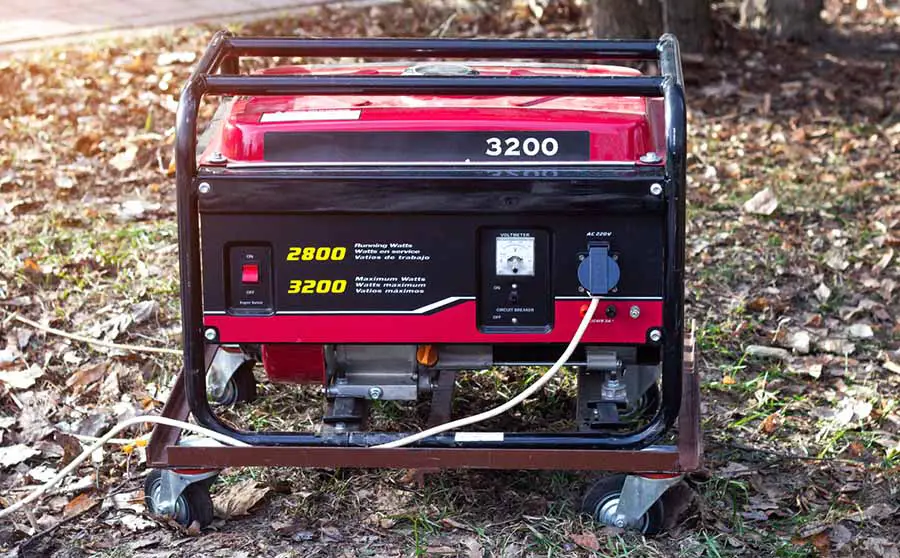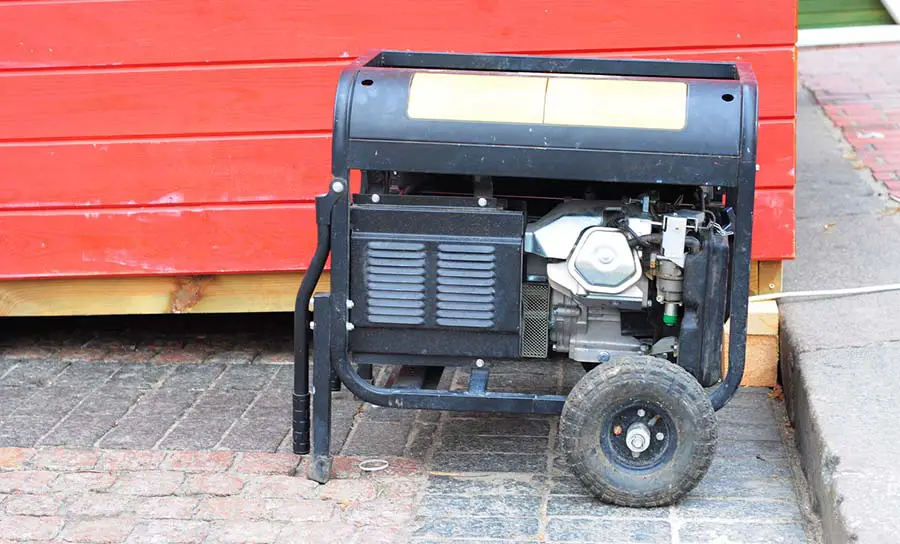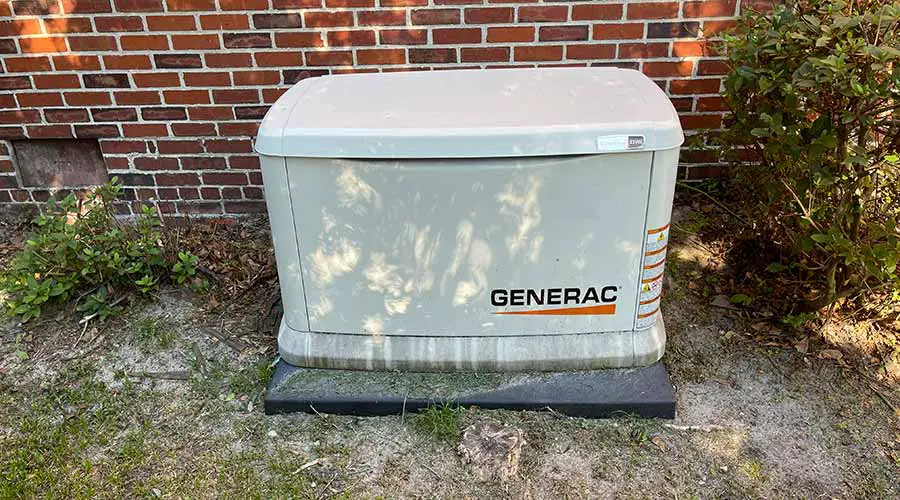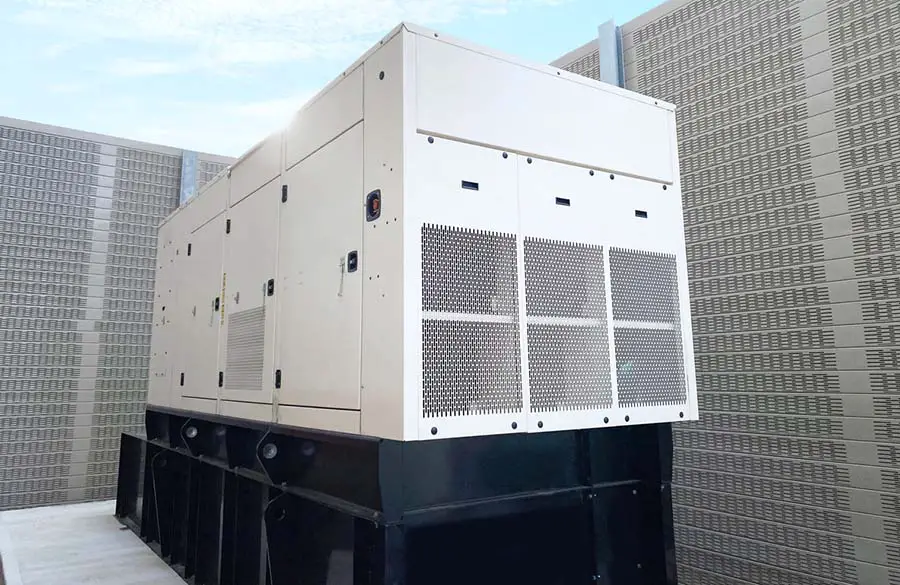
Choosing a generator is all about getting something that will work with your setup, with many people specifically looking for a machine that outperforms the rest. Sometimes you may need to get something that can cool down fast enough to be moved or just to be serviced quickly.
Small generators cool down in one to two hours once you shut them down, and you can service them nearly immediately. However, larger generators can take three to four hours to cool down, with some whole house generators requiring a cooling system to function correctly.
Understanding which generators can completely cool to the touch within an hour and which will stay hot even a few days after the operation is essential when looking at which generator to get. Further, we know that several things can affect the overall temperature and how it cools down.
Factors That Influence Generator Cool Down Time
Several things will affect the heat dissipation from a generator, with most generators that are standing outside cooling down much faster than generators covered in any way. If a generator has a weatherproof cover without venting, it will usually take several hours to cool completely.
Further, the size of a generator will also affect the heat that it can keep; smaller generators will usually reach higher heat than larger generators. However, larger generators will stay warmer for several hours, whereas some small generators can be entirely cooled within 30 minutes if left outside.
The outside temperatures will be the last significant factor that decides how long the generator takes to cool down completely. With colder countries and seasons having the generator cooled completely down, whereas hotter countries and seasons will usually have the generator stay hot for longer.
How Long Do Portable Generators Take to Cool Down?

We can take a look at six portable generators, each one having different ways of operating and each taking varied lengths of time to cool down. We recommend always considering the size of the generator’s wattage when remembering how long it will take to cool.
Many people forget that a generator does not simply shed all the heat once you shut it completely shut down. Whether the generator is the size of a small bag or the generator is large enough to take up all the space in the rear of your truck.
| Brand | Model | Cooldown Time |
| Orico | Portable Solar Generator | 1 to 2 hours |
| Westinghouse | WGen9500DF | 2 to 3 hours |
| Duromax | XP12000EH | 3 to 4 hours |
| WEN | 56475 4750 Watt | 1 to 2 hours |
| Champion | Power Equipment 201052 | 1 to 3 hours |
| Generac | GP1200i | 30 minutes to 2 hours |
Orico Portable Power Station, 110v/300w
This small handheld generator is a series of lithium-ion batteries that can deliver 300 Watts of power to any job site or emergency. While it does not have a combustion engine that produces continuous energy to power anything, the charging and use of the power station will heat it.
When this reaches too high a temperature, it will stop working correctly, either shutting down entirely or not charging at all. Because it is only a set of batteries, if unplugged and left to cool somewhere, the airflow can cool it within one to two hours.
Westinghouse Outdoor Power Equipment 9500w
The Westinghouse WGen 9500 is a robust outdoor generator capable of providing enough power to run a farm, a house, or anything in between. Running this generator for more than three hours will usually take two to four hours to cool down completely.
To get the engine oil appropriately heated, you will have to run the generator for at least half an hour under a light load. If you run the engine has for several hours, we recommend letting it cool down entirely and then heating it again to do an oil change, as the engine is large.
Duromax Xp12000eh Generator-12000 Watt Gas Or Propane
The DuroMax XP12000EH generator will bring power to your house, your farm, or your community when the worst strikes. This is one of the largest portable generators you can find, standing tall at 2.5 feet, making it larger than most children, with a lot packed into a small space.
Generally, this generator will take three to four hours to cool down, even in the heart of winter, as the system is closely packed. The concise layout of this generator can prevent the internal parts of the engine and other components from cooling down quickly, even when the machine is in a frigid environment or surrounded by snow.
Wen 56475 4750-Watt Portable
The WEN 56475 is a smaller portable generator that is perfect on job sites or for smaller homes where a loss of energy will only mean the TV is without power. Similar size and shape to some of the larger portable generators, it is not nearly as compact, with the parts given space to breathe.
As there is more space for air to flow between the engine and the other parts of the generator, it can only take this machine one hour to cool down completely, with two hours being the most extreme. If the outside temperatures are colder and the wind is blowing, it will cool down significantly faster.
Champion Power Equipment 201052 4750
The Champion Power equipment range of generators is small and compact generators that benefit greatly from having space on the frame. With the range going as low as 3500 watts to the largest one being 7500 watts, all with similar frames, that may only be slightly larger.
Because of the size differences, this generator only takes one hour to be completely cooled down, but the larger systems can take just over three hours to cool. The frames for these generators are all open and will allow the machine to cool down with even a hot breeze there to help.
Generac 76711 Gp1200i 1200 Watt Portable
This small generator is one of the trickiest machines to understand, as it is enclosed entirely and will usually heat up faster than most other systems. Many people believe that these generators are quick to overheat; however, you’re only supposed to use them for short periods on job sites or emergencies.
If left outside with a fan or the wind on it, this generator will only take 30 minutes to cool down completely; if left in a room, it can take up to 2 hours to be cool. The system is quick to heat up and will usually be quick to cool down, as there is nothing to keep the heat in the system.
How Long Do Standby Generators Take to Cool Down?

A portable generator can be a standby generator; however, most standby generators are not portable as they are bolted onto the floor and are quite large. Standby generators fully power a house or building during short power interruptions, allowing you to live almost like normal.
This means that these generators are usually fully enclosed in a shell, with the outside air movement not always reaching your generator. Making cooling the system a bit more challenging, as it will take slightly longer for the hot air to dissipate, with some systems baking
| Brand | Model | Cooldown Time |
| Briggs & Stratton | 40325 | 3 to 4 hours |
| Generac | RG02515ANSX | 4 to 5 hours |
| Generac | RD01523ADAE | 3 to 5 hours |
| Briggs & Stratton | 40248 | 2 to 3 hours |
Briggs & Stratton 40325 10,000 Watt Natural Gas/Liquid Propane
One of the smaller standby generators, the Briggs & Stratton 40325, is perfect for apartments or two-family homes that know they may be without power for days on end. It is an air-cooled generator capable of producing 10kw, running on either natural gas or liquid gas.
The generator can take three to four hours to cool down entirely if left inside the housing despite its small size. The fans inside the system will usually work for a few minutes to exhaust the heat once shut down; however, they will not constantly run, causing the housing to become a miniature furnace.
Generac Rg02515ansx Protector Series, 25kw
While Generac no longer produces the RC02515ANSX, it is still one of the most common standby generators for larger buildings. It has a liquid cooling system; owing to the size of the engine, it needs to have a proper cooling system, comfortably procuring 25kW at peak.
The generator’s cooling system will run until it has reached a specific low point, with the liquid cooling flowing through the generator until it is sufficiently cooled. With the proper cooling, the generator will completely cool down within four to five hours, with the inner parts taking the longest to cool.
Generac Rd01523adae Protector Series Diesel Liquid Cooled Standby
Finding a diesel generator built for standby for homes or small businesses is not always easy, so we’ll measure these generators using the Generac RD01523ADAE. All diesel generators will be liquid-cooled, as the system can become impossible to shut down if it gets too hot.
Diesel generators will usually cool down within three to five hours if the liquid cooling is working properly, with the ambient air helping to cool the system further. It is important to remember that the liquid cooling will continue to work even once you shut down the system to help transfer heat equally.
Briggs & Stratton 40248 7000-Watt
The slightly larger standby Briggs & Stratton generator that can run on LPG, natural gas, and gasoline is entirely air-cooled and has several vents for good airflow. This means that while the system is shut off and cooling down, it is not entirely sealed, causing the heat to create an air pocket.
Depending on the generator’s location, it will usually be entirely cool to the touch within two to three hours, with the type of gas used further affecting the cooldown period. We recommend having the generator somewhere the wind can naturally blow through the system to cool it entirely.
How Long Do Backup Generators Take to Cool Down?

Typically a generator is already a backup generator; however, in the world of engineering and commercial buildings, anything below 25kW is considered not enough. When you have an office tower filled with people, you need something to replace municipal supplies completely.
These generators all have different locations that you can place them and will all have varying levels of time that it takes to cool down. They are often placed in basements or as far away from the office blocks as possible to ensure that there is almost no sound from the systems when they are running.
| Brand | Model | Cooldown Time |
| CAT | Genset | Up to 6 hours |
| Aggreko | Gas Generators | 3 to 5 hours |
| Cummins | QS Series | 5 to 7 hours |
| Generac | Protector | 5 to 7 hours |
CAT Genset Stationary Standby Diesel Generators
CAT makes generators specifically for industrial operations, for full backups for office blocks, or even hospitals. These generators start at supplying 25kW and reach well above anything that even the largest offices could ever need, with full liquid-cooled generators that will ensure no overheating.
Owing to their size and their locations in basements, usually even being fully covered when standing outside, it can take up to six hours for these generators to be entirely cool to the touch. The generator can reach operating temperatures within a few minutes, allowing for easy servicing.
Aggreko Backup Standby Generators
Aggreko generators are great for homes, offices, or schools, with their full range of generators running on anything from natural gas, diesel, or hybrid. However, hybrid systems usually produce less power than natural gas or diesel generators, starting at 3kW.
When appropriately run and allowed to cool off, these generators take between three to five hours to be completely cooled down. We recommend having these generators placed somewhere away from people; the sound will make it less of a problem, as keeping them cool is usually not a big issue.
Cummins Backup Generators
Cummins creates some of the largest engines in the world, which naturally means that they are making some of the largest generators as well. Some of these generators are being used in cruise liners to power the entirety of the ships, accurately measuring how long they take to cool down hard.
Most Cummins generators completely cool down within five to seven hours, with the largest generators from the company being entirely water-cooled. The generators are perfect for use in buildings with systems to help them cool down once no longer used.
Conclusion
The cooldown time for your generator will depend on its total size and the ambient temperatures around the generator. If the generator is cooled down by air, wind, or just a fan helping, it will naturally cool down even faster than the average.
Whatever you do, please don’t expect a generator that is in a closed room to cool down fast in any way at all.

